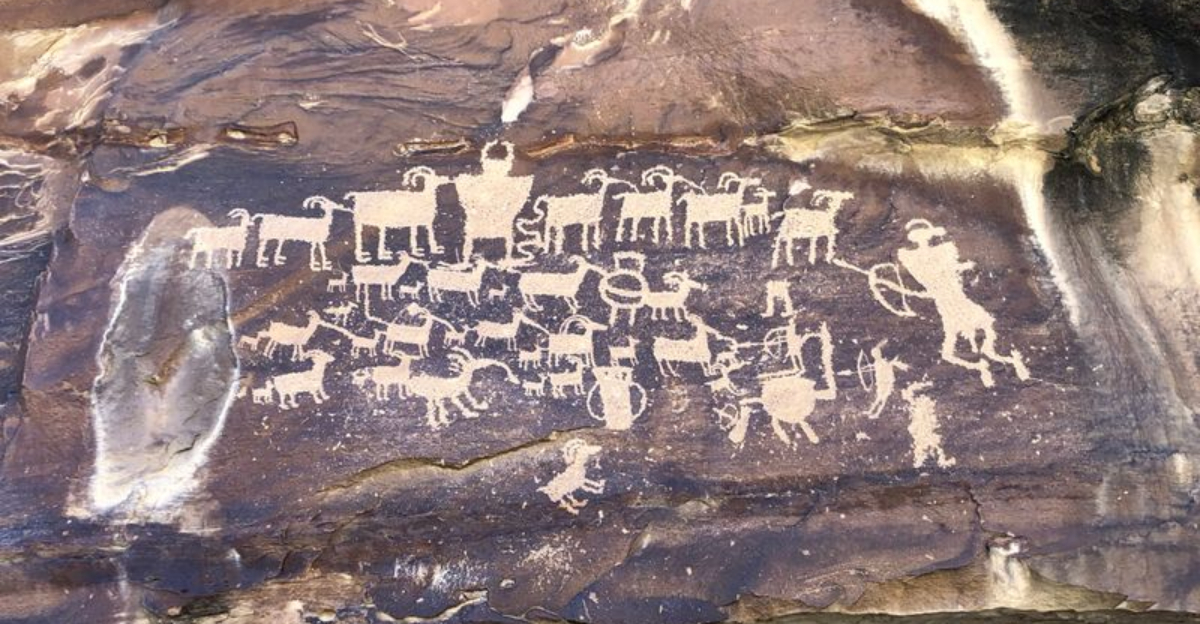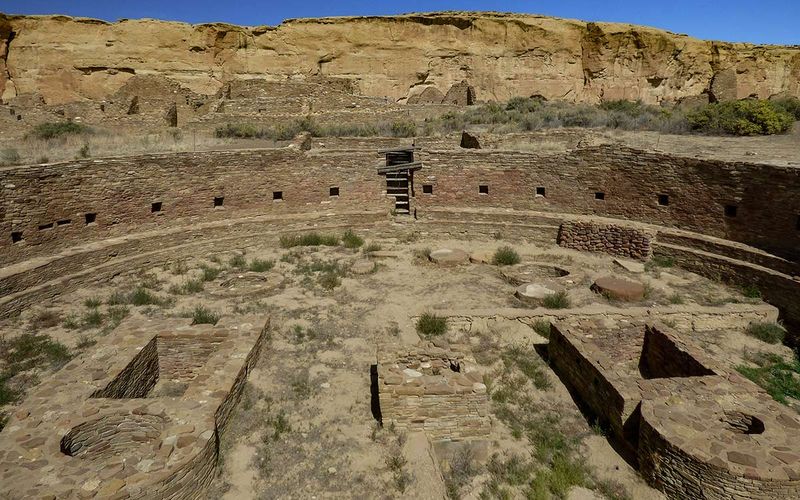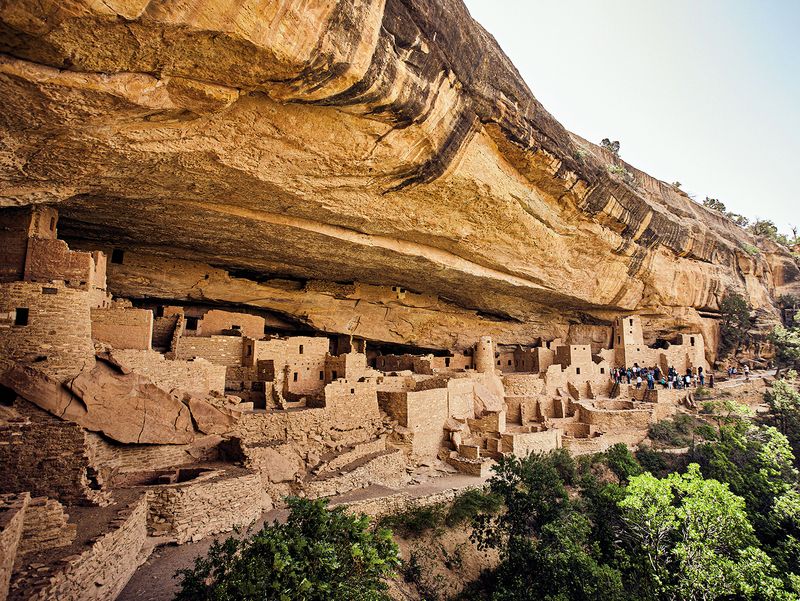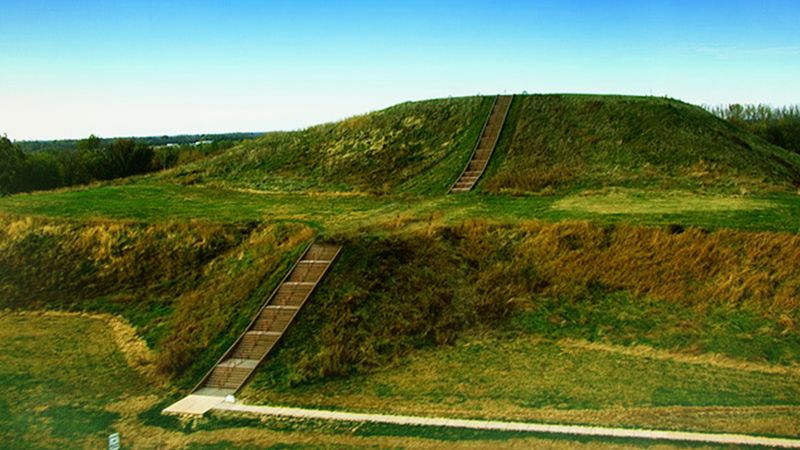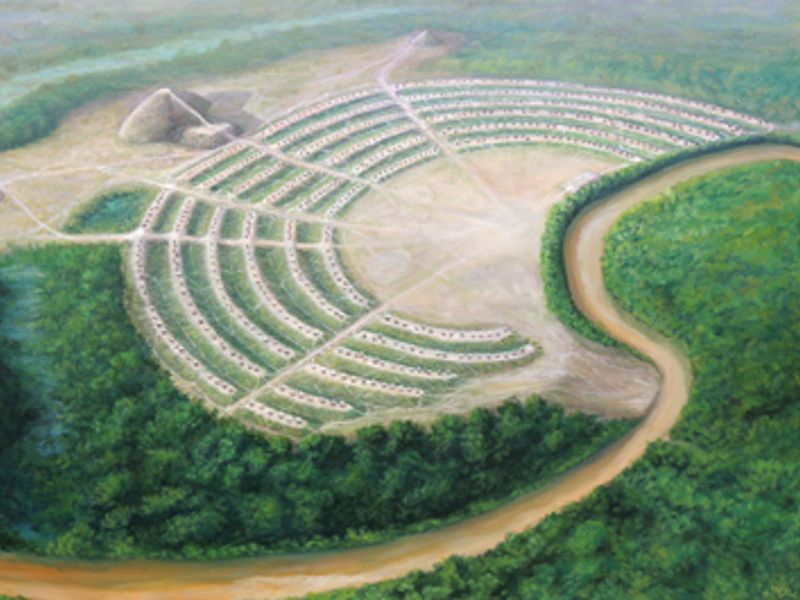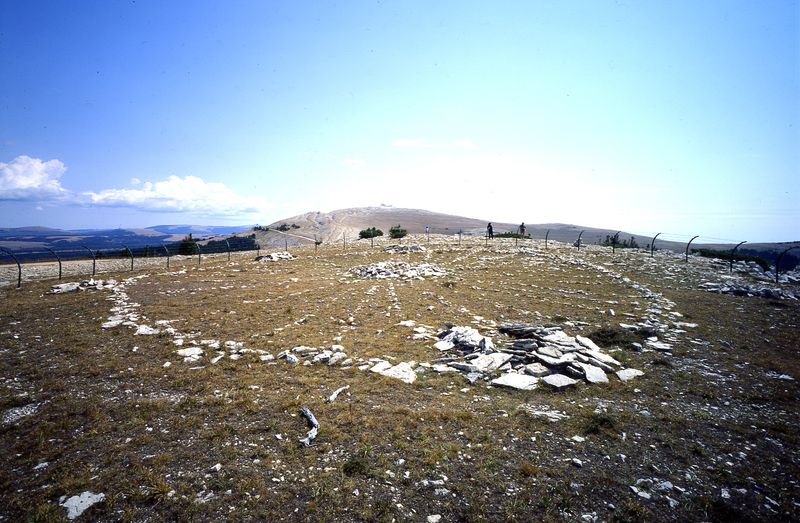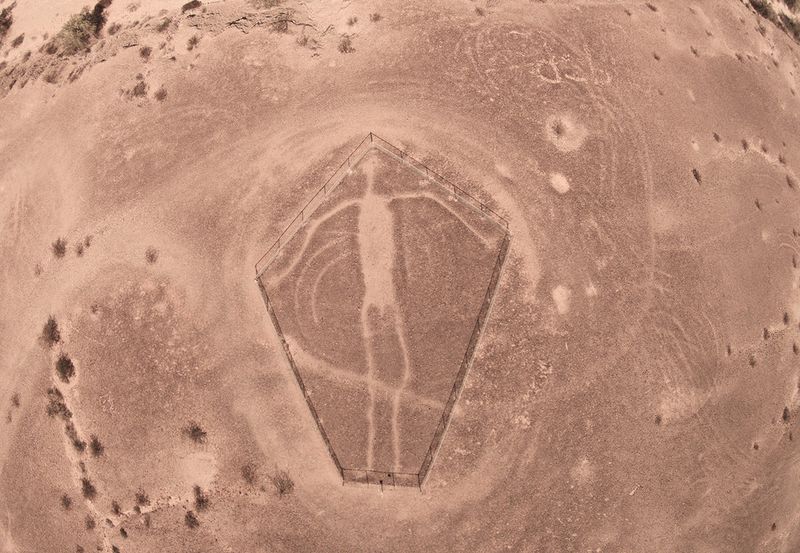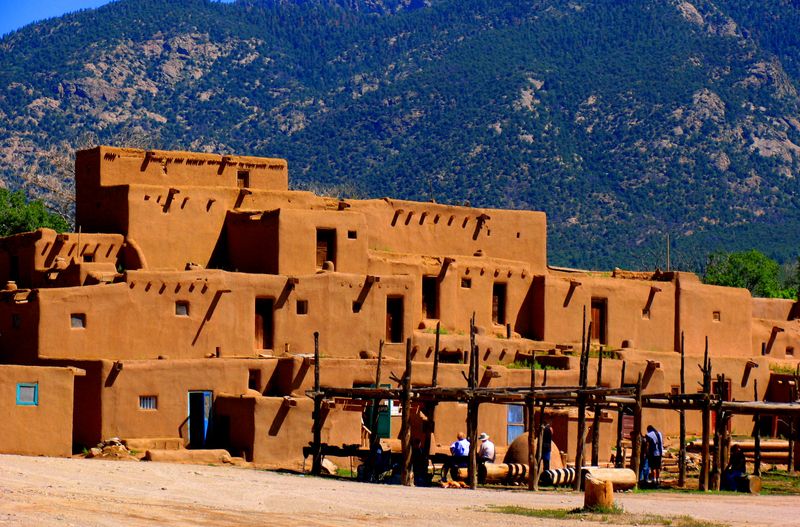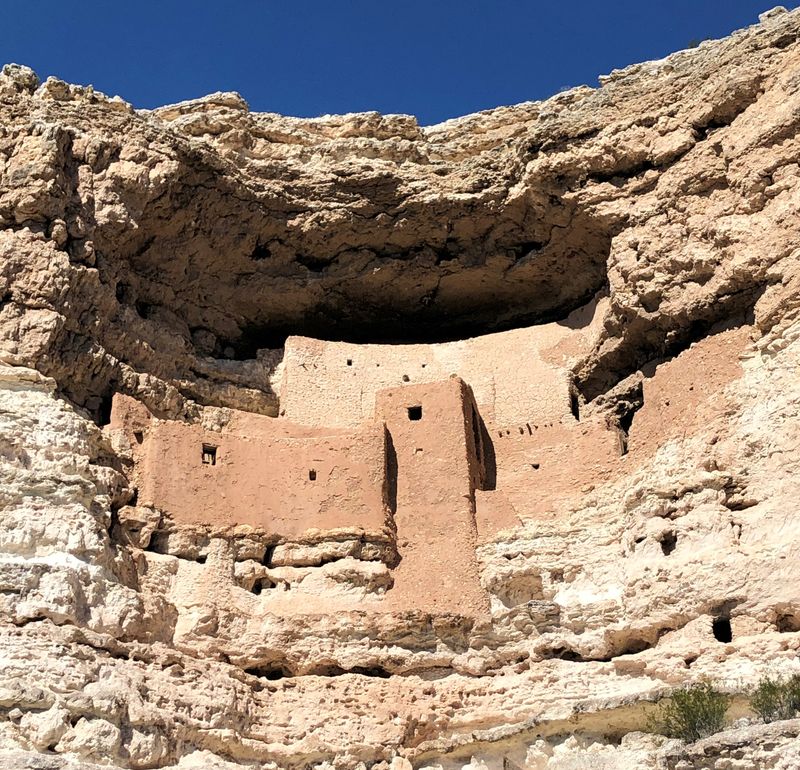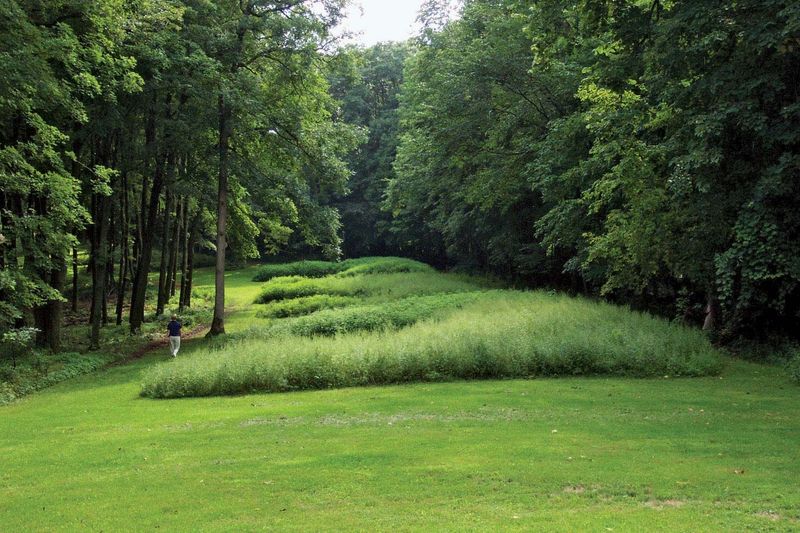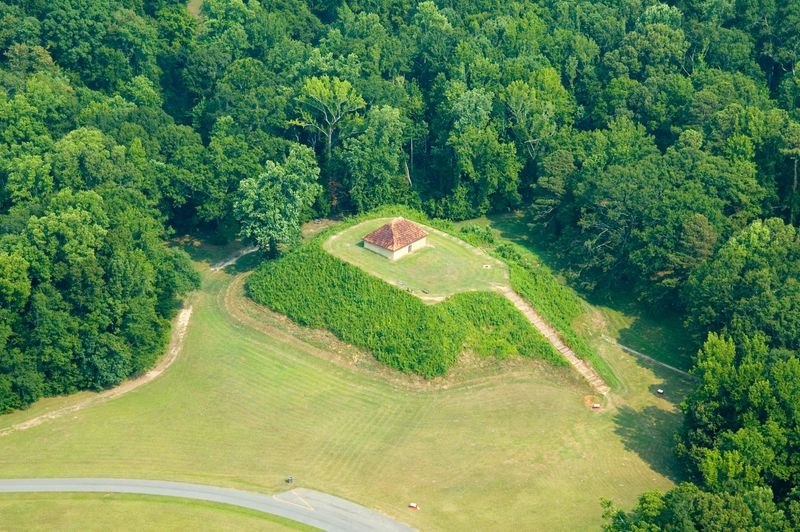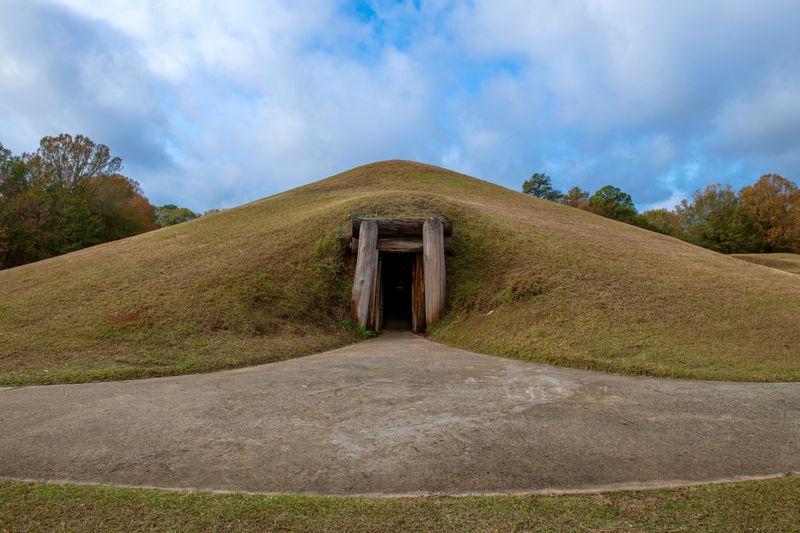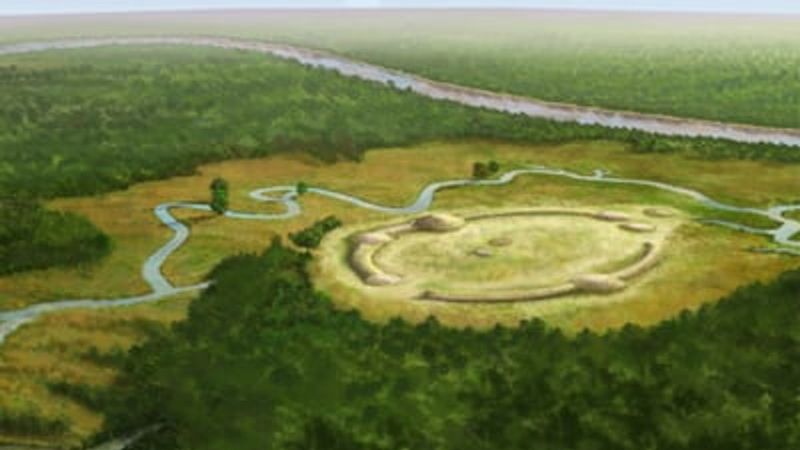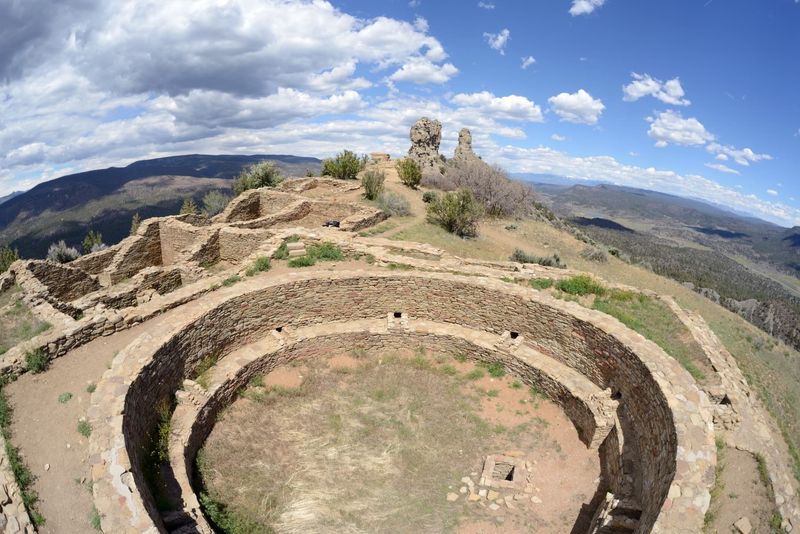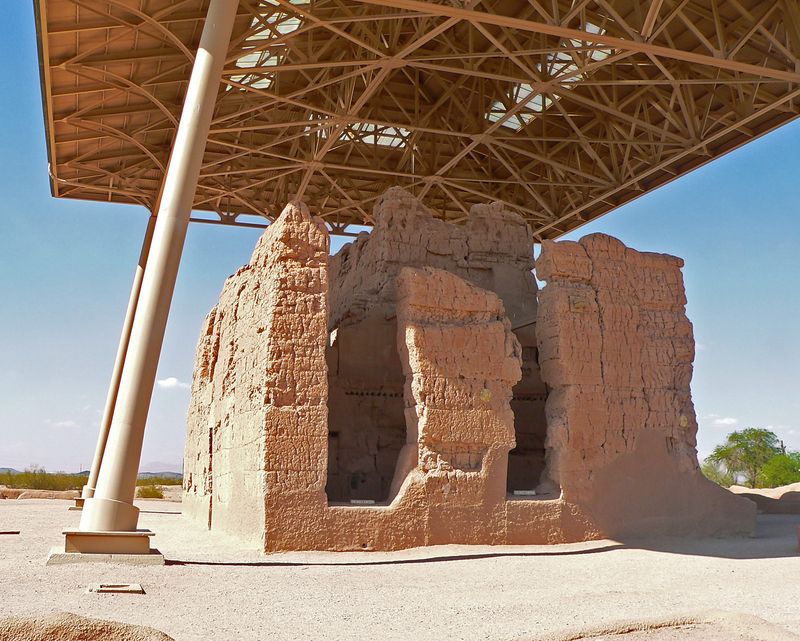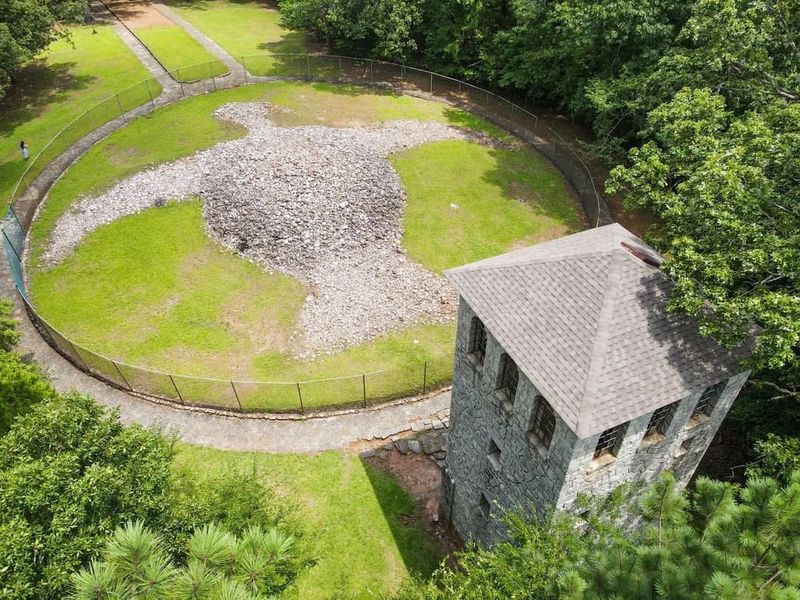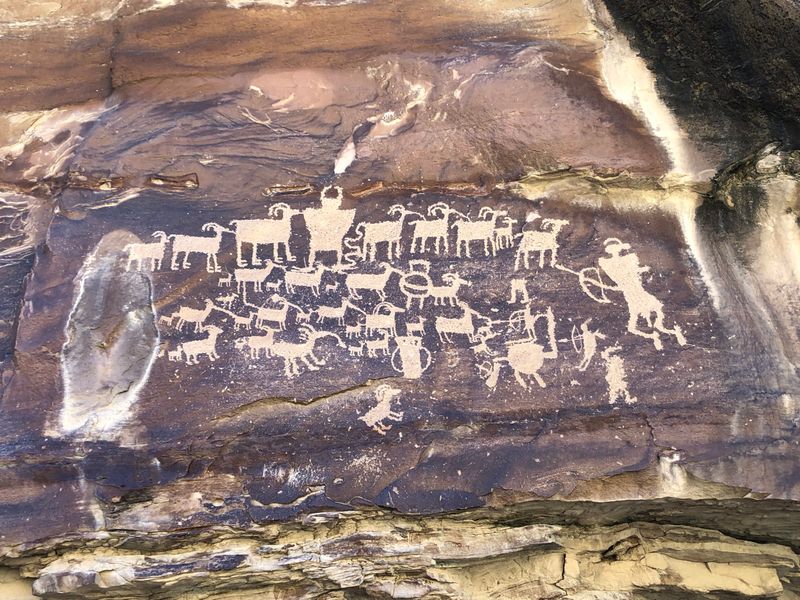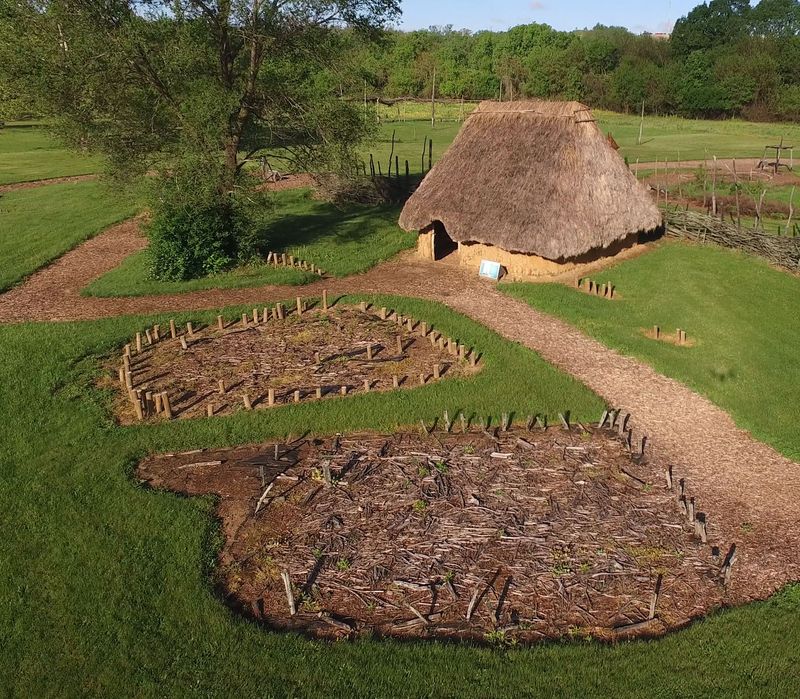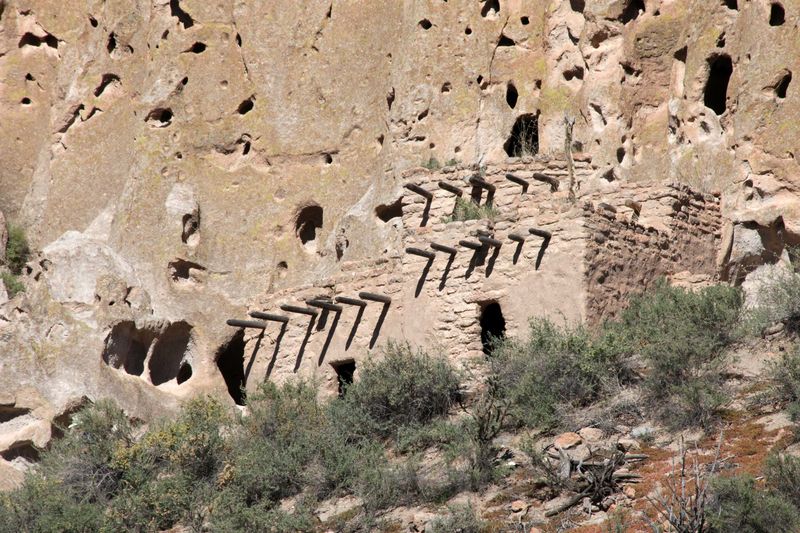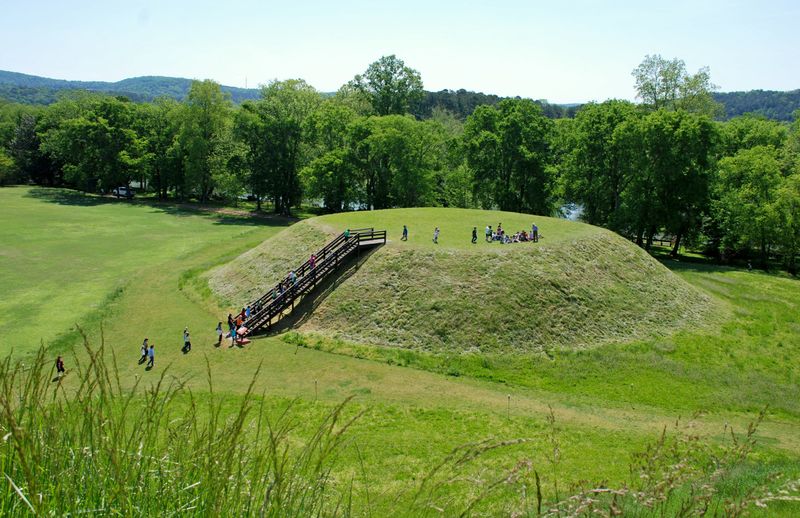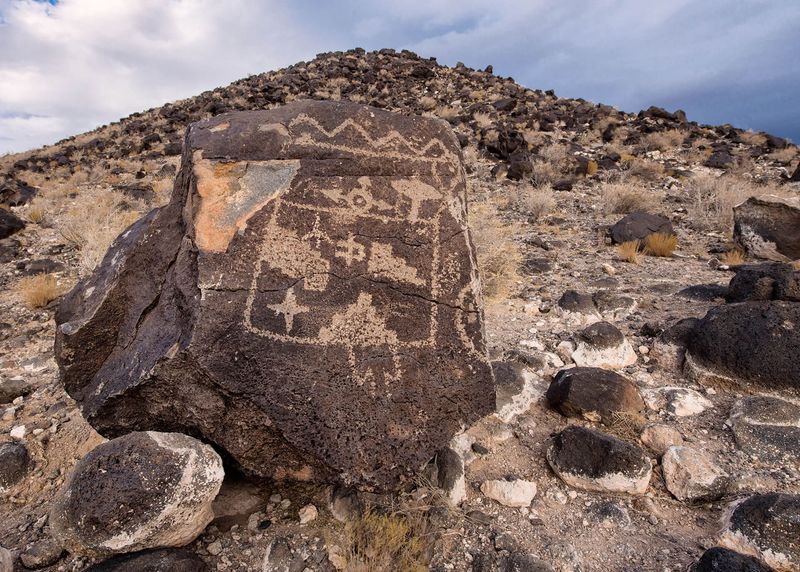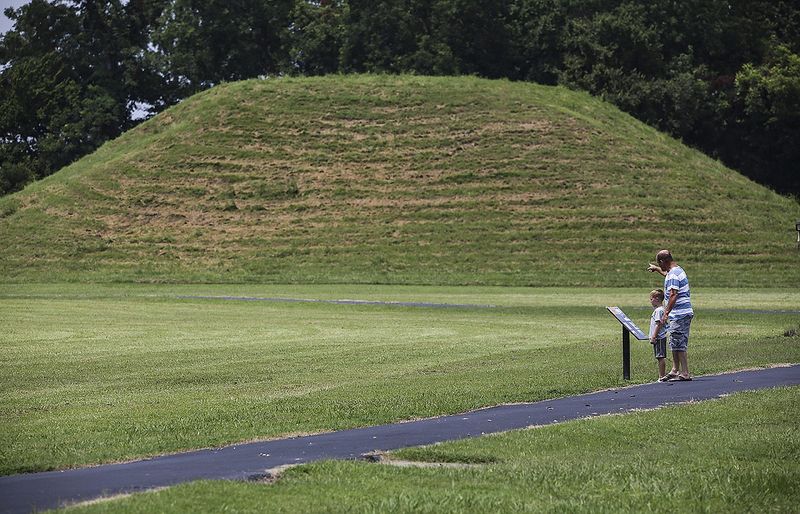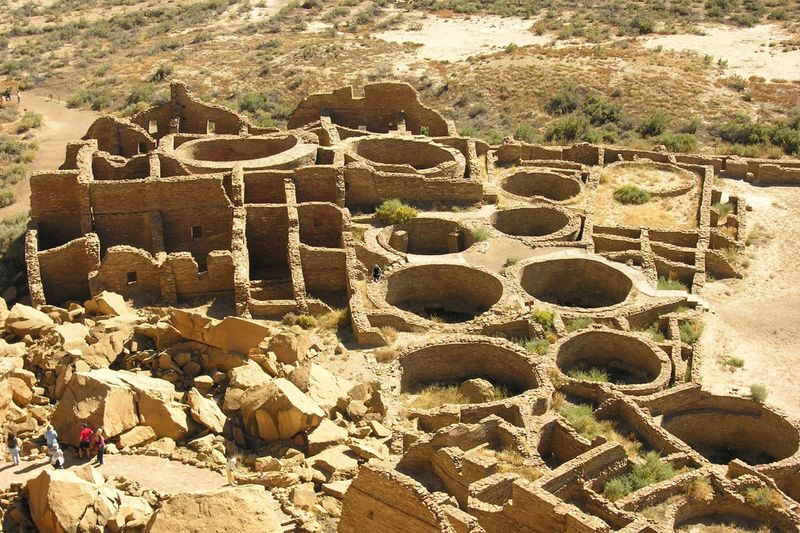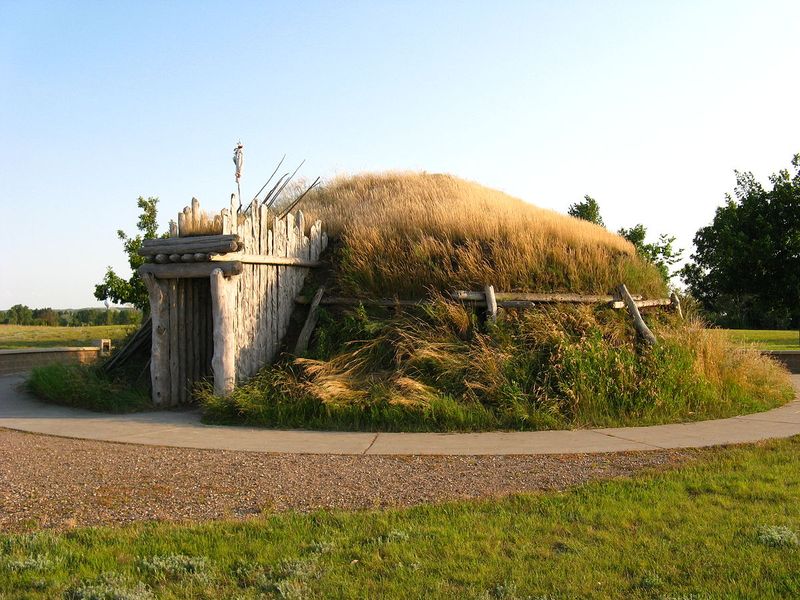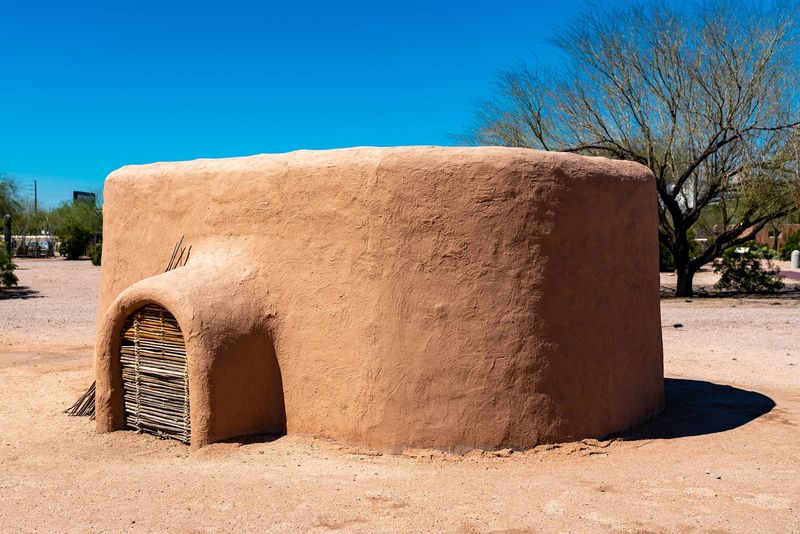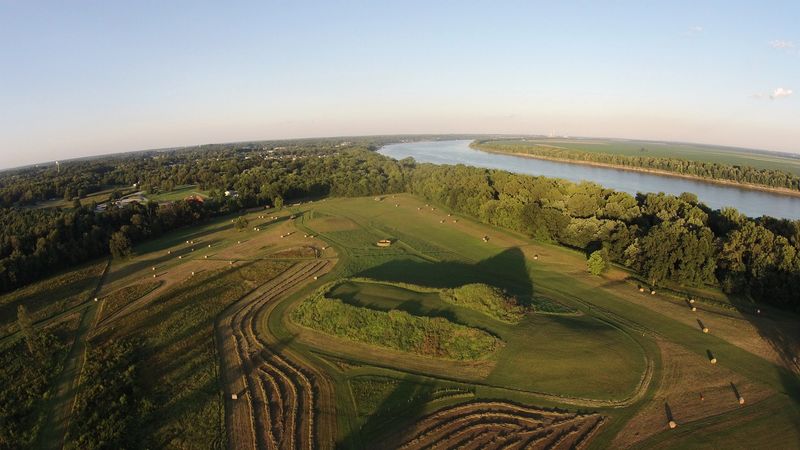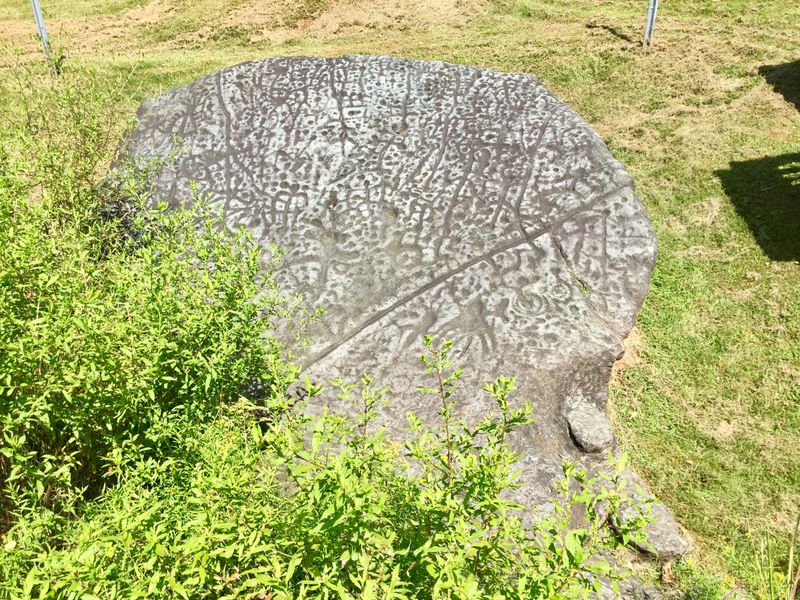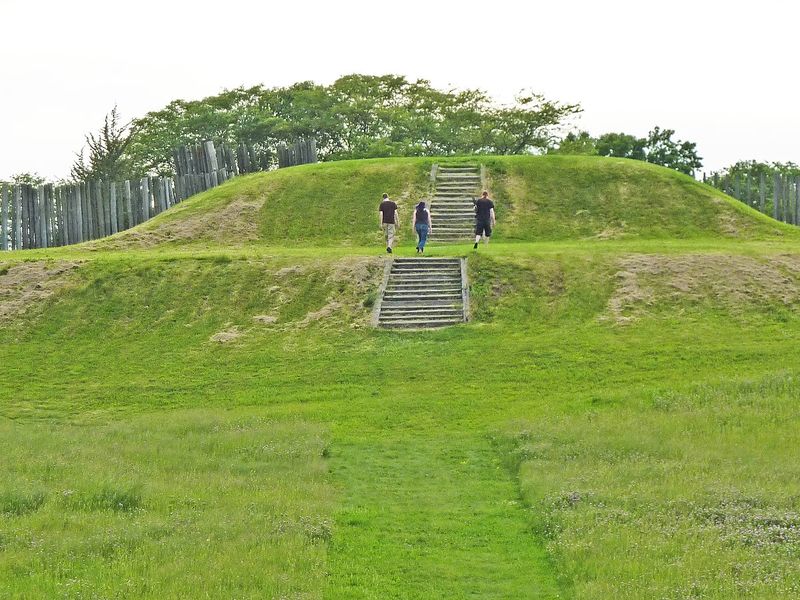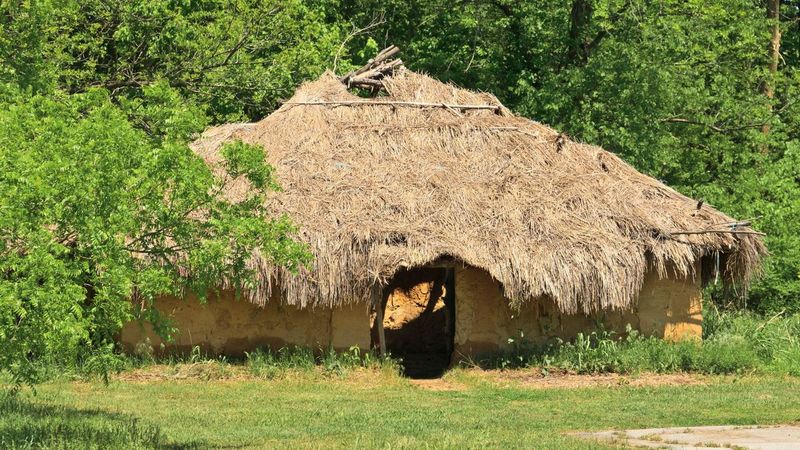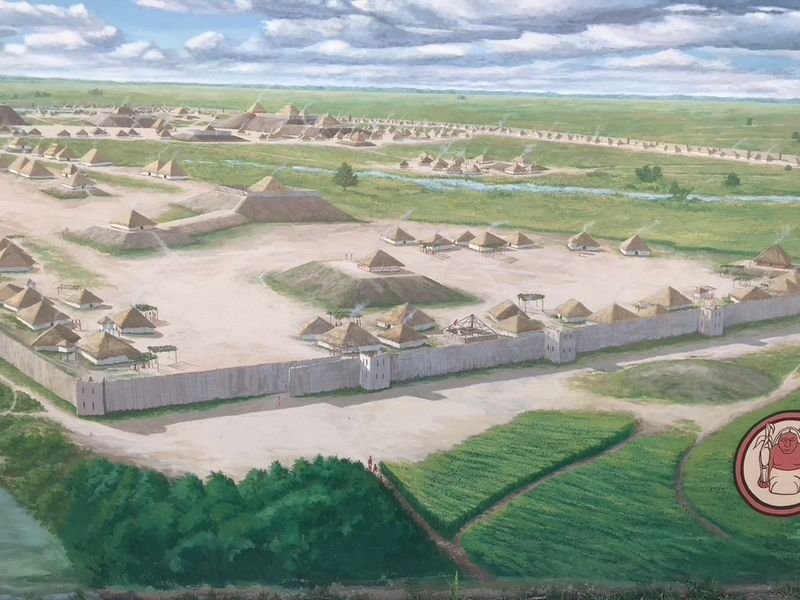Explore the forgotten marvels scattered across the United States, as we journey through 30 ancient wonders that are steeped in history and mystery.
From mysterious mounds to sacred sites, these landmarks tell stories of the ancient civilizations that once called this land home.
Join us as we uncover the remarkable achievements and cultural heritage of the past right in our backyard.
1. Serpent Mound, Ohio
Nestled in Ohio, Serpent Mound is a prehistoric effigy mound that captivates with its snake-like form. Stretching over 1,300 feet, this ancient wonder winds across the landscape in a series of coils.
Believed to be built by the Adena culture, its purpose remains a mystery. Marvel at its intricate design from above, imagining the significance it held for those who constructed it.
This site is more than just a spectacular view; it’s a testament to the ingenuity and cultural expressions of ancient peoples. Visit Ohio to witness this enigmatic piece of history.
2. Chaco Canyon, New Mexico
Chaco Canyon, located in New Mexico, is an iconic archaeological site known for its grand Puebloan structures. These ancient buildings, made of sandstone and timber, date back to around 900 AD.
Explore the ruins and uncover the complex society that thrived here, with its impressive architecture and road systems. The canyon’s monumental buildings are marvels of ancient engineering, reflecting the cultural and spiritual life of the Pueblo peoples.
As you wander through this historical site, imagine the vibrant community that once flourished in this arid landscape.
3. Mesa Verde, Colorado
Mesa Verde in Colorado is home to some of the most well-preserved cliff dwellings in North America. These ancient structures, built by the Ancestral Puebloans, cling to the cliff sides and date back to the 12th century.
Visitors can explore the fascinating architecture and learn about the lives of the people who once inhabited this region. The intricate details of the dwellings and the breathtaking views of the surrounding landscapes offer a glimpse into the past.
Discover the rich cultural heritage and enduring legacy of the Ancestral Puebloans at this UNESCO World Heritage Site.
4. Cahokia Mounds, Illinois
Cahokia Mounds, located in Illinois, represents one of the largest pre-Columbian settlements north of Mexico. At its peak, it was home to thousands of people, featuring an array of mounds, plazas, and woodhenge.
The centerpiece, Monks Mound, is a massive earthwork that stands as a testament to the complex society that existed here. Wander the site to understand the social, political, and spiritual dynamics of the Mississippian culture.
This historic park offers a unique glimpse into a vibrant ancient city that flourished long before European settlers arrived.
5. Poverty Point, Louisiana
Poverty Point in Louisiana is a UNESCO World Heritage Site renowned for its concentric earthen ridges and mounds. Dating back to 1700 BC, it was a major trading hub and ceremonial center for Native Americans.
The scale and precision of the earthworks are astonishing, reflecting the organizational skills and ingenuity of its builders. Wander through the site to imagine the vibrant community that thrived here, trading goods and ideas across vast distances.
Poverty Point stands as a testament to the sophisticated societies that once inhabited this region.
6. Bighorn Medicine Wheel, Wyoming
On a remote mountain in Wyoming lies the Bighorn Medicine Wheel, a sacred Native American site. This ancient stone circle, with its 28 spokes, is believed to have been used for astronomical observations and ceremonial purposes.
The origins and exact function of the wheel remain a mystery, adding to its allure. As you stand amidst this ancient formation, feel the connection to the past and the spiritual significance it held for its creators.
The journey to this remote site offers a unique opportunity to reflect on the cultural heritage and enduring spiritual traditions of Native American peoples.
7. Blythe Intaglios, California
In the heart of the Colorado Desert, the Blythe Intaglios stand as awe-inspiring giant figures etched into the earth. These geoglyphs, which include humanoid and animal shapes, are best viewed from above.
Believed to date back at least 1,000 years, they offer a mysterious glimpse into the lives and beliefs of the Native American tribes, possibly the Mohave and Quechan, who inhabited the area.
The creation of the figures involved scraping away the dark desert surface to reveal lighter soil underneath. This technique, combined with their sheer size, marks them as a significant archaeological wonder.
The purpose and meaning behind these figures remain unclear, intriguing researchers and visitors alike.
Visitors can explore the surrounding desert landscape, absorbing the natural beauty and history that envelops the Blythe Intaglios. This site emphasizes the deep connection between the land and the people who once roamed its vast expanses.
8. Taos Pueblo, New Mexico
Located in New Mexico, Taos Pueblo is a living Native American community that has been continuously inhabited for over 1,000 years. The adobe structures, with their multi-storied design, are a remarkable example of traditional Pueblo architecture.
Visitors can experience the vibrant culture and traditions of the Taos people, while exploring the historic buildings. This UNESCO World Heritage Site offers a unique glimpse into the enduring legacy and resilience of Native American communities.
Taos Pueblo stands as a testament to the rich cultural heritage and vibrant traditions that continue to thrive today.
9. Montezuma Castle, Arizona
Montezuma Castle in Arizona is a stunning example of cliff dwellings built by the Sinagua people around 1100 AD. These well-preserved structures are nestled into a limestone cliff, offering a glimpse into the past.
As you explore this fascinating site, imagine the lives of those who inhabited these dwellings, utilizing the natural environment for survival. The ingenuity and craftsmanship of the builders are evident in the architecture and design.
Montezuma Castle stands as a testament to the resilience and adaptability of ancient cultures in the face of challenging environments.
10. Effigy Mounds National Monument, Iowa
Effigy Mounds National Monument in Iowa is home to numerous earthen mounds shaped like animals, including bears and birds. These ancient formations were constructed by Native American cultures over 1,000 years ago.
Wander through the lush forests and imagine the spiritual and ceremonial significance these mounds held for their creators.
The site offers a unique opportunity to connect with the past and reflect on the cultural heritage of the indigenous peoples of North America. Effigy Mounds stands as a testament to the artistic and spiritual expressions of ancient societies.
11. Moundville Archaeological Park, Alabama
Moundville Archaeological Park in Alabama is one of the largest Mississippian cultural sites in the United States. It features a collection of earthen mounds, plazas, and a museum showcasing artifacts.
The park offers insights into the social, political, and ceremonial aspects of the Mississippian people who thrived here. As you explore the site, imagine the bustling community that once inhabited this area, engaging in trade and ceremony.
Moundville stands as a testament to the complexity and sophistication of pre-Columbian societies in North America.
12. Ocmulgee Mounds National Historical Park, Georgia
Ocmulgee Mounds in Georgia is a significant archaeological site showcasing the cultural heritage of Native American civilizations. The park features large earthen mounds, ceremonial earth lodges, and a museum with artifacts.
Explore the site to learn about the ancient societies that once thrived here, their traditions, and way of life. The mounds offer a glimpse into the architectural and spiritual achievements of these cultures.
Ocmulgee stands as a testament to the rich cultural history and enduring legacy of Native American peoples in the southeastern United States.
13. Watson Brake, Louisiana
Watson Brake in Louisiana is one of the oldest mound complexes in North America, dating back to 3500 BC. The site features a series of earthen mounds arranged in an oval shape, reflecting the organizational skills of its builders.
Explore this ancient wonder to understand the early societies that once inhabited this region. The mounds provide insights into the social and ceremonial practices of these cultures.
Watson Brake stands as a testament to the ingenuity and cultural expressions of Native American peoples long before the advent of written history.
14. Chimney Rock National Monument, Colorado
Chimney Rock National Monument in Colorado is a stunning archaeological site featuring twin rock spires and ancient Puebloan ruins. The site holds spiritual significance and was likely used for astronomical observations.
Explore the ruins and imagine the cultural and spiritual practices of the people who once lived here. The dramatic landscape and ancient structures offer a unique glimpse into the past.
Chimney Rock stands as a testament to the ingenuity and cultural achievements of the Ancestral Puebloans who thrived in the American Southwest.
15. Casa Grande Ruins, Arizona
Casa Grande Ruins National Monument, located in the Sonoran Desert, features a massive ancient building constructed by the Hohokam people.
This enigmatic four-story structure, known as ‘Great House,’ is made of caliche, a natural concrete-like material. Dating back to the 13th century, it serves as a testament to the Hohokam’s architectural ingenuity.
The exact purpose of Casa Grande remains a mystery, with theories suggesting it was used for astronomy, ceremonial purposes, or as a trade center. The surrounding compound included ball courts and residential areas, indicating a thriving community.
Today, visitors can explore the ruins and gain insight into the daily lives of the Hohokam, reflecting on their innovation and adaptation to the harsh desert environment. Interpretive programs and a visitor center enhance the educational experience.
16. Rock Eagle Effigy Mound, Georgia
Rock Eagle Effigy Mound in Georgia is an ancient stone mound shaped like a bird, constructed by Native American peoples. The mound, made of white quartz rocks, dates back to the Woodland period.
As you explore this fascinating site, imagine the cultural and ceremonial significance it held for its creators. The intricate design and craftsmanship reflect the artistic expressions of ancient societies.
Rock Eagle stands as a testament to the rich cultural heritage and spiritual traditions of Native American peoples in the southeastern United States.
17. Nine Mile Canyon, Utah
Nine Mile Canyon in Utah is often referred to as the “world’s longest art gallery” due to its extensive collection of ancient petroglyphs. These rock carvings, created by the Fremont and Ute peoples, depict scenes of daily life and spiritual beliefs.
Wander through the canyon and marvel at the intricate designs that have endured for centuries. The petroglyphs offer a unique glimpse into the cultural and artistic expressions of ancient societies.
Nine Mile Canyon stands as a testament to the creativity and resilience of Native American peoples in the face of time.
18. SunWatch Indian Village, Ohio
SunWatch Indian Village in Ohio is a reconstructed Native American village that offers insights into the daily lives of the Fort Ancient culture. The site features circular dwellings, a central plaza, and a museum with artifacts.
Explore the village to understand the social, economic, and spiritual aspects of the people who lived here. The meticulous reconstruction offers a glimpse into the innovative architectural practices and cultural traditions of the Fort Ancient peoples.
SunWatch stands as a testament to the enduring legacy and vibrant culture of Native American societies in the region.
19. Bandelier National Monument, New Mexico
Bandelier National Monument in New Mexico is renowned for its ancient cliff dwellings and petroglyphs etched into the canyon walls. These remnants of the Ancestral Puebloans offer a glimpse into the cultural and spiritual life of ancient societies.
Explore the rugged terrain and imagine the lives of the people who once called this place home. The intricate designs and well-preserved structures reflect the ingenuity and adaptability of their builders.
Bandelier stands as a testament to the rich cultural heritage and enduring legacy of the Ancestral Puebloans in the American Southwest.
20. Etowah Indian Mounds, Georgia
Etowah Indian Mounds in Georgia are significant archaeological remnants of the Mississippian culture. The site features large earthen mounds, a plaza, and a museum with artifacts.
Explore the mounds to understand the social, political, and ceremonial aspects of the people who thrived here. The impressive earthworks reflect the advanced organizational skills and cultural expressions of ancient societies.
Etowah stands as a testament to the rich cultural heritage and enduring legacy of Native American peoples in the southeastern United States.
21. Petroglyph National Monument, New Mexico
Petroglyph National Monument in New Mexico is home to a vast collection of ancient rock art, etched into volcanic rocks by Native American and Spanish settlers. These petroglyphs reflect the cultural and spiritual beliefs of their creators.
Wander through the desert landscapes and marvel at the intricate designs that have withstood the test of time. The petroglyphs offer a unique glimpse into the artistic expressions and cultural heritage of ancient societies.
Petroglyph National Monument stands as a testament to the creativity and resilience of the people who once inhabited this region.
22. Toltec Mounds Archaeological State Park, Arkansas
Toltec Mounds Archaeological State Park in Arkansas is a significant site of the Plum Bayou culture, featuring a series of large earthen mounds. These mounds served as platforms for ceremonial and residential purposes.
Explore the park to understand the social and spiritual aspects of the people who thrived here. The impressive earthworks demonstrate the advanced organizational skills and cultural expressions of ancient societies.
Toltec Mounds stands as a testament to the rich cultural heritage and enduring legacy of Native American peoples in the southeastern United States.
23. Pueblo Bonito, New Mexico
Pueblo Bonito, located in Chaco Canyon, New Mexico, is an iconic archaeological site known for its grand Puebloan architecture. The ancient stone structures, dating back to around 900 AD, reflect the complex society that thrived here.
Explore the ruins and imagine the daily lives and cultural practices of the people who inhabited this area. The monumental buildings and intricate designs offer a glimpse into the architectural and spiritual achievements of the Pueblo peoples.
Pueblo Bonito stands as a testament to the rich cultural heritage and enduring legacy of the Ancestral Puebloans in the American Southwest.
24. Knife River Indian Villages, North Dakota
Knife River Indian Villages in North Dakota is a significant archaeological site showcasing the cultural heritage of Native American peoples. The site features reconstructed earth lodges, a museum, and interpretive trails.
Explore the villages to understand the social, economic, and spiritual aspects of the people who lived here. The earth lodges offer insights into the innovative architectural practices and cultural traditions of the Hidatsa people.
Knife River stands as a testament to the enduring legacy and vibrant culture of Native American societies in the northern plains.
25. Hohokam Pima National Monument, Arizona
Hohokam Pima National Monument in Arizona is an archaeological site that offers insights into the Hohokam culture. The site features ancient canal systems and remnants of adobe structures.
Explore the monument to understand the ingenious agricultural practices and cultural traditions of the people who thrived here. The canals and structures reflect the advanced engineering skills and adaptability of the Hohokam peoples.
Hohokam Pima stands as a testament to the rich cultural heritage and enduring legacy of Native American societies in the American Southwest.
26. Angel Mounds State Historic Site, Indiana
Angel Mounds in Indiana is one of the best-preserved prehistoric Native American sites in the United States. The site features large earthen mounds, a reconstructed village, and a museum.
Explore the area to understand the social, political, and ceremonial aspects of the Mississippian culture. The impressive mounds and artifacts offer insights into the complex society that thrived here.
Angel Mounds stands as a testament to the rich cultural heritage and enduring legacy of Native American peoples in the Midwest.
27. Judaculla Rock, North Carolina
Nestled in the mountains of North Carolina, Judaculla Rock is a large soapstone boulder adorned with mysterious petroglyphs. These intricate carvings, believed to be over 1,500 years old, reflect the rich storytelling tradition of the Cherokee people.
The rock is named after Judaculla, a legendary Cherokee giant believed to have etched the symbols himself. Each petroglyph carries cultural and spiritual significance, providing insight into the mythology and cosmology of the Cherokee.
Visitors can view the rock up close, contemplating the meanings behind the symbols and their connection to Cherokee heritage. The surrounding area offers scenic beauty and an opportunity to learn more about the indigenous history through local museums and cultural centers.
28. Aztalan State Park, Wisconsin
Aztalan State Park in Wisconsin features impressive earthen mounds and reconstructed stockades. This ancient site, once a thriving Mississippian village, offers insights into the cultural and social life of its inhabitants.
Explore the mounds and reconstructed structures to understand the complex society that thrived here. The site reflects the advanced organizational skills and cultural expressions of ancient peoples.
Aztalan stands as a testament to the rich cultural heritage and enduring legacy of Native American societies in the Midwest.
29. Spiro Mounds, Oklahoma
Spiro Mounds in Oklahoma is a significant archaeological site of the Mississippian culture. The site features large earthen mounds and a museum showcasing artifacts.
Explore the mounds to understand the social, political, and ceremonial aspects of the people who thrived here. The impressive earthworks reflect the advanced organizational skills and cultural expressions of ancient societies.
Spiro Mounds stands as a testament to the rich cultural heritage and enduring legacy of Native American peoples in the southeastern United States.
30. Kincaid Mounds, Illinois
Kincaid Mounds State Historic Site, located in southern Illinois, is one of the lesser-known ancient wonders of the Mississippian culture. This archaeological site contains several large earthen mounds that were once part of a thriving community.
The mounds served various purposes, including ceremonial, residential, and burial functions, reflecting the complex social structure of the Mississippians.
Excavations have revealed artifacts like pottery, tools, and jewelry, shedding light on the daily life and craftsmanship of the inhabitants.
Engaging with the site offers a chance to walk through history and imagine the vibrant community that existed here centuries ago.
The interpretive signs and occasional guided tours provide a deeper understanding of the site’s significance and the broader Mississippian culture.
